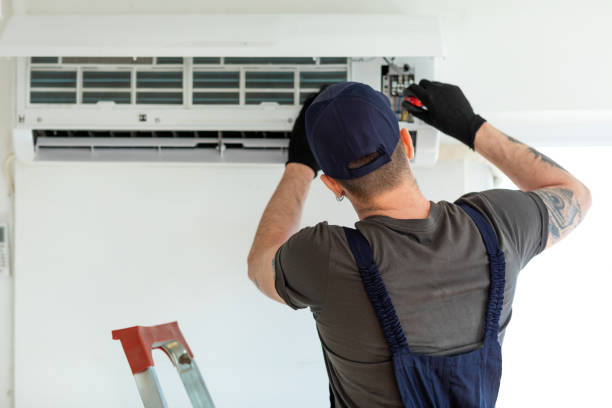Investing in a heating, ventilation, and air conditioning (HVAC) system is a crucial decision for any homeowner or business owner. Beyond just selecting the right equipment, ensuring quality HVAC installation is the key to unlocking long-term energy savings and system durability. A well installed HVAC system can provide consistent comfort, reduce energy consumption, and last for many years, protecting your investment while benefiting your wallet and the environment.
The Importance of Quality HVAC Installation
Many people focus solely on the brand or type of HVAC system they purchase but overlook the critical role of installation quality. Without expert installation, even the most advanced HVAC units can perform poorly, leading to increased energy costs, frequent breakdowns, and shorter equipment lifespan.
Avoiding Common Installation Mistakes
Poor installation often manifests in problems such as incorrect refrigerant charge, improperly sized ductwork, leakage, and poor airflow distribution. These factors cause the HVAC system to work harder than necessary, wasting energy and accelerating wear and tear.
Quality installation prevents these issues by adhering strictly to manufacturer guidelines and industry best practices. This includes:
- Precise measurement and load calculation to select equipment that matches the specific needs of the space.
- Correct handling and charging of refrigerants.
- Proper sealing and insulating of ducts to prevent energy loss.
- Ensuring electrical and safety standards are met.
How Quality Installation Boosts Energy Savings
Energy efficiency is one of the top priorities for modern HVAC systems. However, a unit’s energy ratings mean very little if the installation undermines its performance. High-efficiency HVAC models can save significant energy, but only when installed correctly.
Proper Equipment Sizing
A critical part of quality installation is sizing the system appropriately for your building. Oversized units cycle on and off too frequently, wasting electricity and increasing wear; undersized units struggle to maintain comfortable temperatures. Professional HVAC technicians perform Manual J load calculations to determine the precise capacity needed.
Optimized Airflow and Ductwork
Duct systems account for a large portion of HVAC efficiency. Leakage or poor design forces your system to use more energy to deliver conditioned air. Certified installers ensure ducts are properly routed, sealed, and insulated to maintain optimal airflow and reduce losses.
Advanced Thermostat and Controls
Quality installation incorporates programmable or smart thermostats that optimize heating and cooling schedules based on occupancy patterns. These controls help avoid unnecessary energy use and maintain comfort seamlessly.
Durability Through Expert Installation Practices
Beyond energy savings, professional HVAC installation enhances the durability and longevity of your system. A durable HVAC system reduces repair costs and inconvenience over time.
Reducing System Stress
Correct installation minimizes undue stress on key components like compressors, fans, and motors. For example, accurate refrigerant charging avoids overheating and excessive cycling, prolonging compressor life.
Preventing Premature Wear
Properly installed equipment experiences fewer breakdowns caused by airflow restrictions, thermostat malfunctions, or electrical issues. Quality installation prevents avoidable failures and keeps your system running smoothly year after year.
Manufacturer Warranty Compliance
Many HVAC manufacturers require proof of professional installation to maintain warranty validity. Choosing certified technicians protects your warranty coverage, ensuring that repair or replacement costs are minimized should defects arise.
Steps Involved in Quality HVAC Installation
Initial Home or Building Evaluation
The process begins with a thorough inspection of your property, HVAC needs, existing ductwork, insulation, and airflow conditions. This evaluation helps technicians create a detailed installation plan tailored to your setup.
Selecting Appropriate Equipment
Based on energy goals, budget, and property specifics, HVAC professionals guide you in choosing energy-efficient models with high Seasonal Energy Efficiency Ratio (SEER) or Heating Seasonal Performance Factor (HSPF) ratings.
Skilled Installation and Setup
Certified installers remove any old equipment carefully and install new units with precision, following all safety and quality standards. Ducts are sealed, wiring is checked, and refrigerant is charged perfectly.
System Testing and Optimization
After installation, the system undergoes extensive testing to verify airflow, temperature control, refrigerant levels, and electrical connections. Any necessary adjustments are made to ensure optimal performance.
User Orientation and Maintenance Advice
Technicians explain system operation, thermostat programming, and maintenance tips to help maximize system efficiency and durability.
Benefits of Quality HVAC Installation
- Lower Energy Bills: Efficient equipment paired with expert installation significantly reduces electricity and fuel consumption.
- Consistent Comfort: Proper system sizing and calibrated airflow provide stable temperatures and better humidity control.
- Environmentally Friendly: Lower energy use translates to reduced carbon footprint and support for sustainable living.
- Fewer Repairs: Durable installation reduces system failures and emergency service calls.
- Improved Air Quality: Sealed ducts and balanced ventilation decrease dust, allergens, and humidity-related problems.
Investing in quality HVAC installation by certified professionals is the foundation of achieving energy savings and system durability. It guarantees that your system will not only perform efficiently but also stand the test of time, offering reliable comfort and peace of mind year after year.





Comments